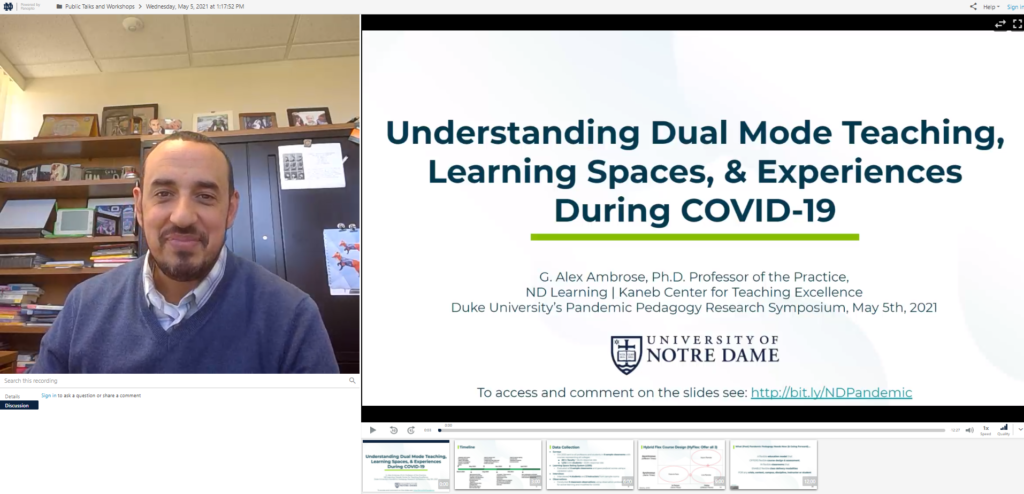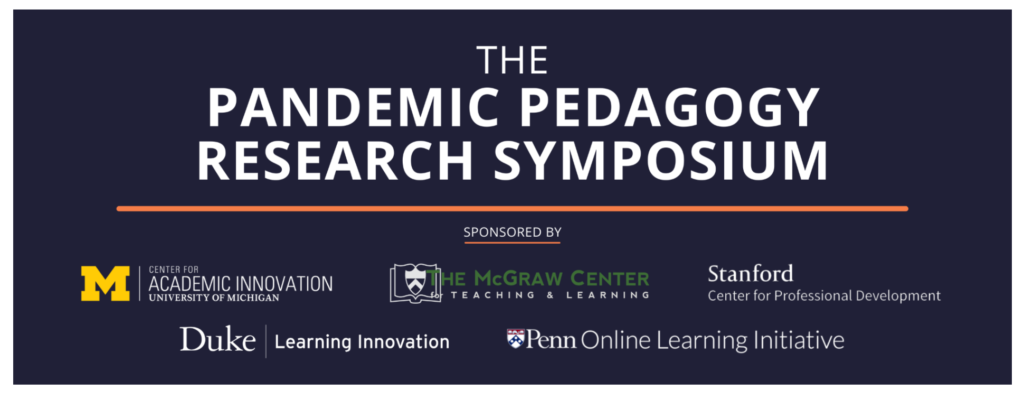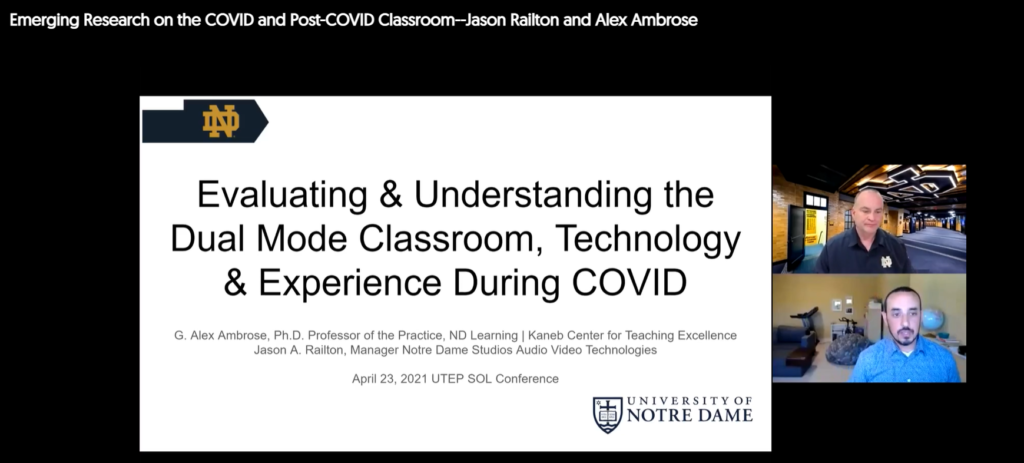
To Cite, Access, Watch, and Share this Presentation:
Ambrose, G. Alex (2021) “Understanding Dual Mode Teaching, Classroom, & Learner Experience During COVID -19” Duke University’s The Pandemic Pedagogy Research Symposium.
Check here for the 12 min recording of the presentation
To access and comment on the slide deck, click here
Abstract:
This session will share COVID dual-mode (live in-person and remote classrooms) technology-enhanced classroom, teaching, and learning experiences from the University of Notre Dame. Using survey data from over 2k students and about 30 instructors across 6 classrooms (small, medium, and large across all disciplines) we will share how our classroom upgrades performed during COVID and the implications for the future classroom post-COVID.
Research Question:
RQ1 Evaluating Dual-Mode Classroom Design: How can we improve dual-mode (in-person + live remote) classrooms during COVID and for future semesters and optimize to increase flexibility?
RQ 2 Understanding Dual-Mode Experiences: How can the experience of instructors, in-person and remote learners be improved by changes to the classroom, and what are the implications for post-COVID?
Context:
During the Fall 2020 Semester, the University of Notre Dame, like all universities, had to make adjustments to its classrooms and traditional models of teaching in order to accommodate learning in a world with COVID-19. When COVID hit in spring 2020, Notre Dame transitioned to completely online learning with no students on campus. For Fall 2020, Notre Dame adopted multiple modes of teaching for its classes, with some online, some in person, and some hybrid, with half the class attending in-person while the other half attended online. Every in-person class had the capacity to be dual-mode, with the professor and some students in-person while students who could not come to class attended live remotely. In order to allow for dual mode delivery, classrooms across campus were upgraded with new technology, including an extra computer monitor on the lectern for the instructor workstation, with new webcams and microphones. Six classrooms with 30 different courses from all major disciplines were studied. A total of 29 faculty and 1,215 students were surveyed with a small sample of interviews and observations.
Methods:
We analyzed data from multiple methods including surveys, interviews, observations, and the Learning Space Rating Score.
Related Work:
Staggs, Jessica, Ambrose, G. Alex (expected May 2021) “COVID-19’s Effects on Classrooms’ Learning Space Rating System Scores” [Upcoming Article and Infographic: http://bit.ly/lsrsCovidND]
Ambrose, G. Alex, Railton, Jason (2021) “Evaluating & Understanding the Dual Mode Classroom, Technology & Experience During COVID” University of Texas at El Paso Scholarship of Learning Conference [Slide Deck]
Stags, Jessica, Ambrose, G. Alex (2021) “COVID-19 Effects on Classrooms’ Learning Space Rating System Scores.”International Look at Teaching in Higher Education During COVID-19. Notre Dame International and Tel Aviv University.
ND Learning, Notre Dame International and Tel Aviv University Collaborate on Teaching and Learning during COVID-19 International Panel. [Recording]
Ambrose, G. Alex, Ambrose, Laura Williamson (2020) “Why Notre Dame should move from a Dual-Mode mandate to an adapted HyFlex choice in response to COVID-19 course delivery for fall 2020” [Open Letter to the Provost]
Conference:
The Pandemic Pedagogy Research Symposium

